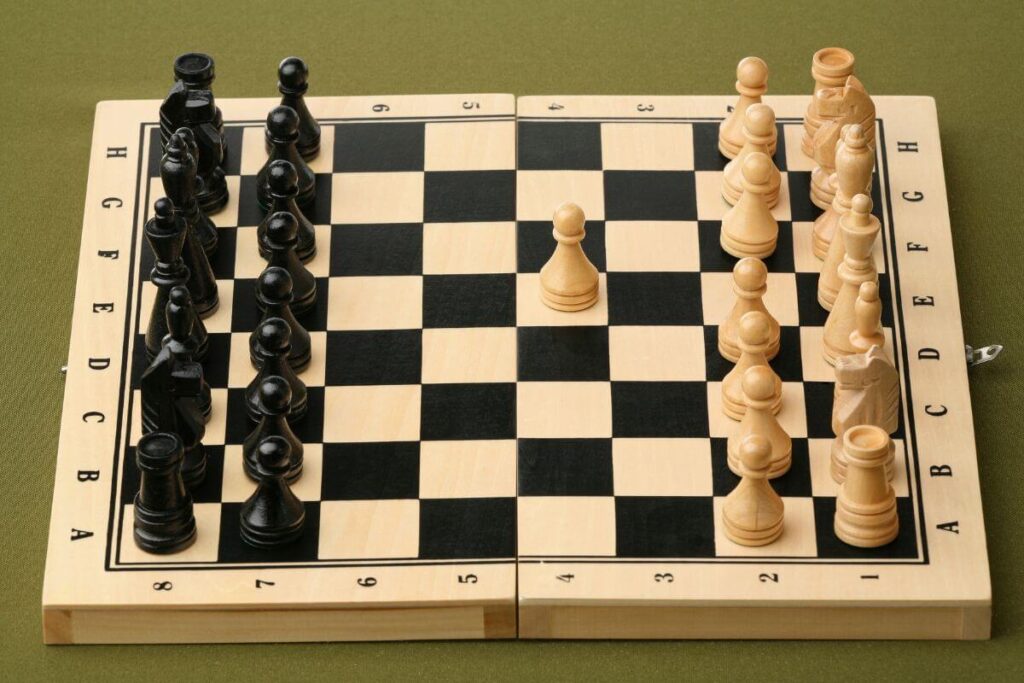In the intricate world of chess, openings serve as the gateway to strategy and tactics. As players venture onto the 64-square battlefield, their initial moves can set the stage for triumph or tribulation.
In this article, we delve into the most popular chess openings, providing insights into the foundational moves that shape the grandmaster’s game.
Whether you’re a novice seeking to expand your repertoire or a seasoned player looking to refine your skills, join us on a journey through the openings that define the art of chess.
1. King’s Pawn Opening (1.e4)

Many people start playing chess with the move 1.e4, and it’s a good choice for a reason. This move controls the center squares on the board, which are key in chess. It also opens up the path for the bishop and queen to get into the action. When you play 1.e4, you’re signaling that you’re up for an exciting, tactical fight.
This move leads to some famous and intense battles on the board. For instance, in the Sicilian Defense, Black often responds with 1…c5, and this can lead to complex and exciting games. There are also aggressive openings like the King’s Gambit and the Fried Liver Attack that can happen when you start with 1.e4. These openings promise an intense and strategic game on the chessboard.
2. Queen’s Pawn Opening (1.d4)

When White starts with 1. d4, it’s known as the Queen’s Pawn Opening. It’s a common move, second only to 1. e4.
This move is smart because it helps White control the center of the board and makes it harder for Black to play …e5. It also makes it tricky for Black to move their b8 knight to c6, where it could be in trouble if White pushes their pawn to d5.
White doesn’t worry too much about their c1-bishop right now; they’re more focused on slowing down Black’s development.
Now, Black has to decide how to respond to White’s strong move. Usually, Black plays either 1…d5 or 1…Nf6. These are the most popular choices because many other moves can lead to the same kind of positions. Back in the old days, letting White have a big center with 2. e4 wasn’t liked, but nowadays, it’s more about personal preference. So, the game can take different paths from here, but it’s all part of the chess strategy.
3. English Opening (1.c4)

When you play 1. c4 in chess, you’re making a move that controls the d5 square on the board. It also lets your Bishop on c1 and Queen on d1 get into the action.
By doing this, you’re not rushing to develop all your pieces right away. Instead, you keep your options open and can switch to other openings later in the game. For example, if you play d4 down the line, it can turn into a Queen’s Gambit.
While it’s not as common as pushing your central pawns, quite a few famous chess players, like Mikhail Botvinnik, Bobby Fischer, Anatoly Karpov, Garry Kasparov, and Magnus Carlsen, have used this move in their games.
4. Sicilian Defense (1.e4 c5)
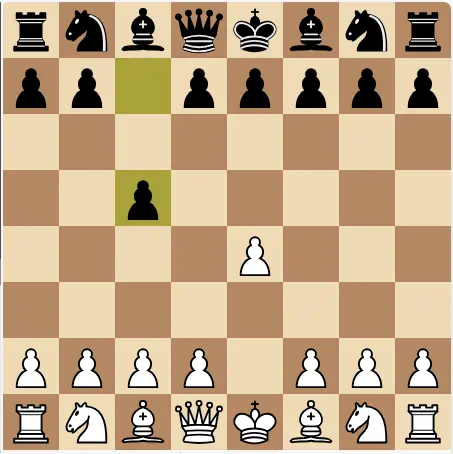
In the Sicilian Defense, Black chooses to play 1…c5. This move is aimed at preventing White from fully controlling the center with d4.
The Sicilian Defense is a strategy where Black tries to fight back. By keeping the game uneven and different on both sides, Black hopes to create a situation where both players have chances to win.
In the Open Sicilian, White starts with more pieces developed and a stronger center. But Black has two pawns in the center and can eventually make their presence felt in that part of the board. White often goes for an attack on the kingside, while Black looks to counterattack on the queenside or take advantage if White makes a mistake during their kingside assault.
5. French Defense (1.e4 e6)
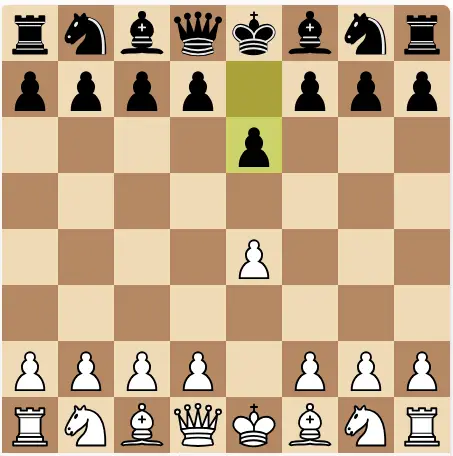
When Black plays 1…e6, the goal is to prepare for the next move, which will be pushing the pawn to d5. This move aims to make d5 a strong and stable point in the center of the board.
However, the French Defense has two main concerns for Black. First, the Bishop on c8 can get stuck behind Black’s own pawn chain, which goes from f7 to e6 and then to d5.
This means the bishop doesn’t have much room to move and can’t be fully active. Second, White can opt for the Exchange variation, where they respond to d5 by capturing the pawn with exd5. This leads to a symmetrical position where the game might end in a draw without much excitement.
But despite these challenges, the French Defense has its merits. Black can use moves like c5 or f6 to gradually put more pressure on White’s center. So, studying this opening is worthwhile because it offers instructive moments in the battle for control of the center. From White’s perspective, pushing the e4 pawn to e5 can restrict Black’s knight and create opportunities for attacking Black’s kingside.
6. Caro-Kann Defense (1.e4 c6)
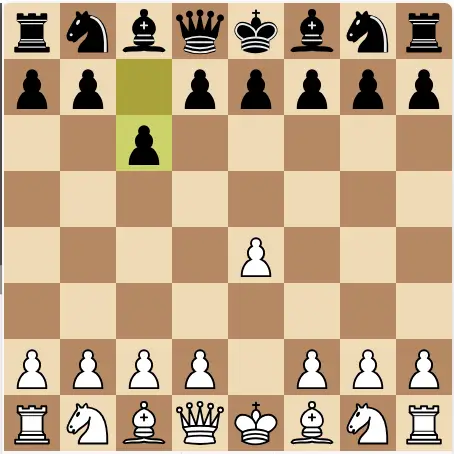
The Caro-Kann opening is known for its stability and safety, leading to a good pawn structure, especially in endgames. However, White has various ways to respond and might develop faster than Black. Compared to some other similar openings like the Sicilian and French, the Caro-Kann is considered less dynamic.
In the usual Open Game (1. e4 e5), one common threat Black faces is White’s bishop targeting the vulnerable f7-square. Black often aims to resolve this threat by advancing their queen pawn to d5 early in the opening. The Caro-Kann achieves this by playing 1…c6, while the French Defense does it with 1…e6.
By choosing the Caro-Kann, Black gives up a bit of central control but gains easier piece development. The idea is often to let White’s pawns extend too far or create a weaker pawn structure that Black can exploit in the endgame.
Unlike the French Defense, where a pawn blocks the queen’s bishop on e6, in the Caro-Kann, there’s no pawn on e6. However, this means the c6-square is no longer available for the knight.
7. Ruy López (1.e4 e5 2.Nf3 Nc6 3.Bb5)

The Ruy Lopez, also known as the Spanish Game, hinges on a crucial move. This opening is quite popular among master players and has been embraced by almost all chess enthusiasts at some point in their chess journey, whether they’re playing as White or Black.
In the Ruy Lopez, White’s aim is to challenge Black’s knight on c6, potentially leaving the e5 pawn vulnerable. This threat isn’t immediate, though. If White captures the knight with 4. Bxc6, Black can recapture with either 5… Qd4 or 5… Qg5 to regain the pawn.
Black has various responses to this setup. The most common one is the Morphy Defense, where Black plays 3… a6. This move forces White to make a choice about their bishop – either retreat it or trade it off.
There are other moves available as well, some of which don’t prioritize protecting the knight or the pawn and instead focus on further piece development.
This opening gets its name from Ruy López de Segura, a Spanish priest from the 16th century.
8. Italian Game (1.e4 e5 2.Nf3 Nc6 3.Bc4)
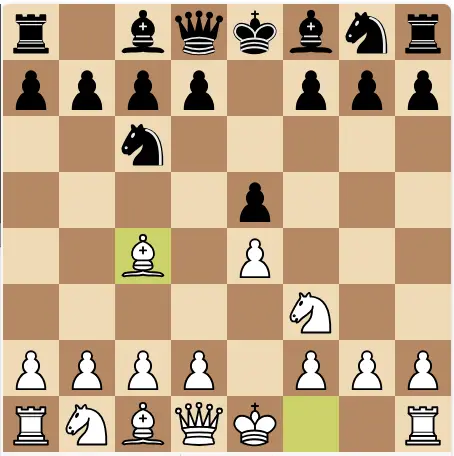
The Italian Game, an ancient and widely embraced chess opening, holds a special place in the world of chess. In this opening, White skillfully deploys the bishop to a strategically advantageous square, from where it exerts influence over the central battlefield and takes aim at the vulnerable f7 square.
What makes the Italian Game particularly appealing, especially for newcomers to the game, is its simplicity and accessibility. It’s considered one of the finest choices for beginners, offering a straightforward path for early piece development and the opportunity to engage in strategic battles on the chessboard.
This opening’s enduring popularity is a testament to its effectiveness and its ability to cater to a wide range of players, from novices just beginning their chess journey to seasoned masters seeking a reliable and classical choice for their opening repertoire. So, whether you’re just starting out or looking to broaden your chess knowledge, the Italian Game stands as a timeless and dependable opening option.
9. Scotch Opening (1.e4 e5 2.Nf3 Nc6 3.d4)

This bold move makes Black almost have to play 3…exd4, which quickly settles the central tension. This leads to a wide-open game with plenty of room for both players to make their moves.
Some folks have tried 3…d6, but it’s not considered great because of the 4.dxe5 dxe5 5.Qxd8+ Kxd8 6.Bc4 sequence.
Another option is 3…Nxd4, which goes like this: 4.Nxd4 exd4 5.Qxd4. Some good players think Black can do quite well with this move.
Then, there’s also the possibility of 4. Nxe5 after 3…Nxd4, which means Black has to move their knight again.
10. Grünfeld Defense (1.d4 Nf6 2.c4 g6 3.Nc3 d5)
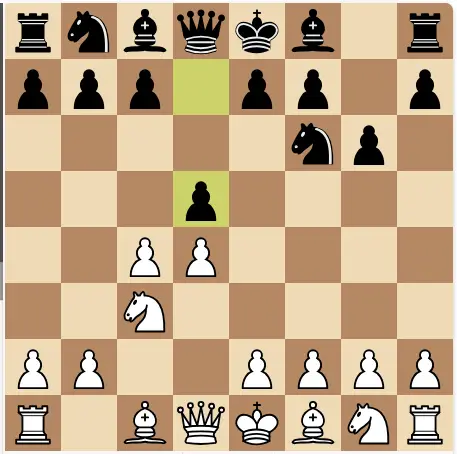
This is the typical starting position in the Grünfeld Defence, although the move d5 can be delayed if White chooses not to play e4 early, which sometimes happens if White has previously played Nf3.
In this opening, Black plays d5, aiming to challenge White’s control of the center of the board. White has several options here, but one common choice is to exchange pawns on d5 to disrupt Black’s piece placement.
Back in the 1920s, European chess was undergoing a significant transformation. The Nimzo-Indian Defence had emerged as a prominent opening, representing what was then called the “Modern style” of play. Then, in 1922, a well-known master named Ernst Grünfeld introduced a new system that started defeating some of the greatest chess masters of the time, including Alekhine, Kostic, Sämisch, and Colle.
This new approach was termed the “hypermodern” style, and Grünfeld, in line with hypermodern principles, demonstrated how the previously accepted classical ideas could be challenged.
He showed that a central pawn formation could be both a target for attack and a strategic asset.
One of the key battlegrounds in this opening is the Exchange Variation, which involves 4.cxd5 Nxd5 5.e4 Nxc3 6.bxc3.

